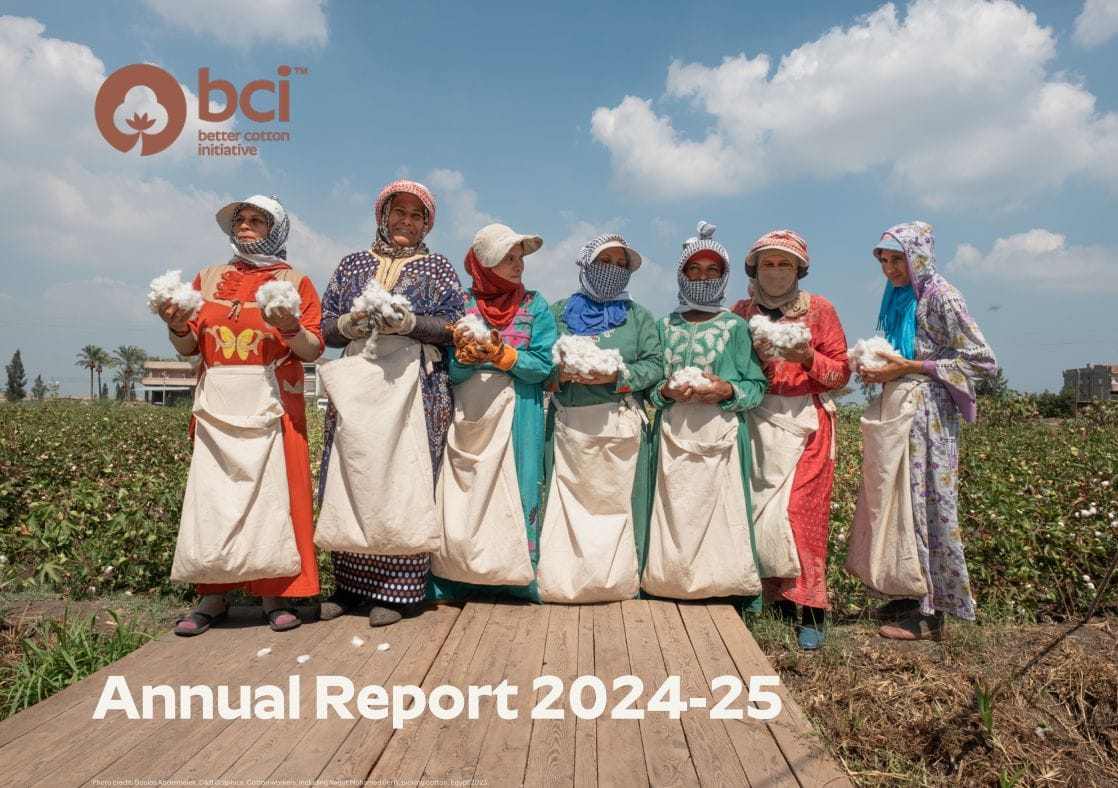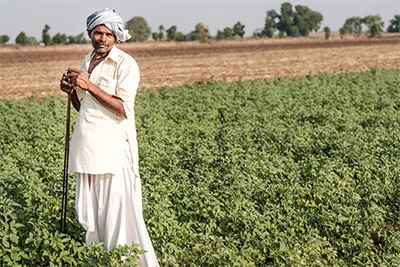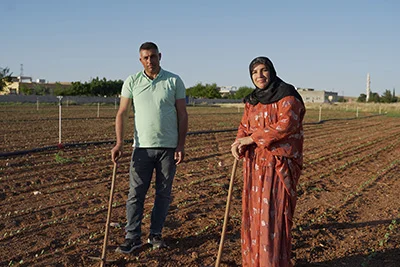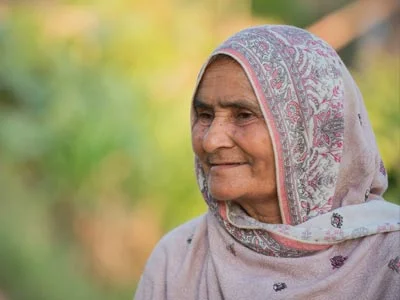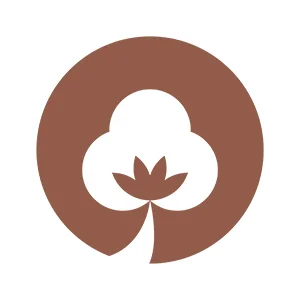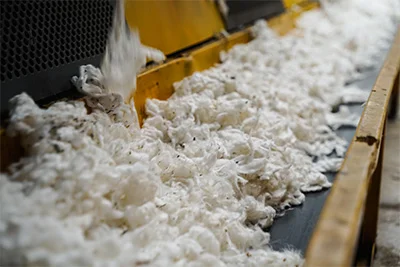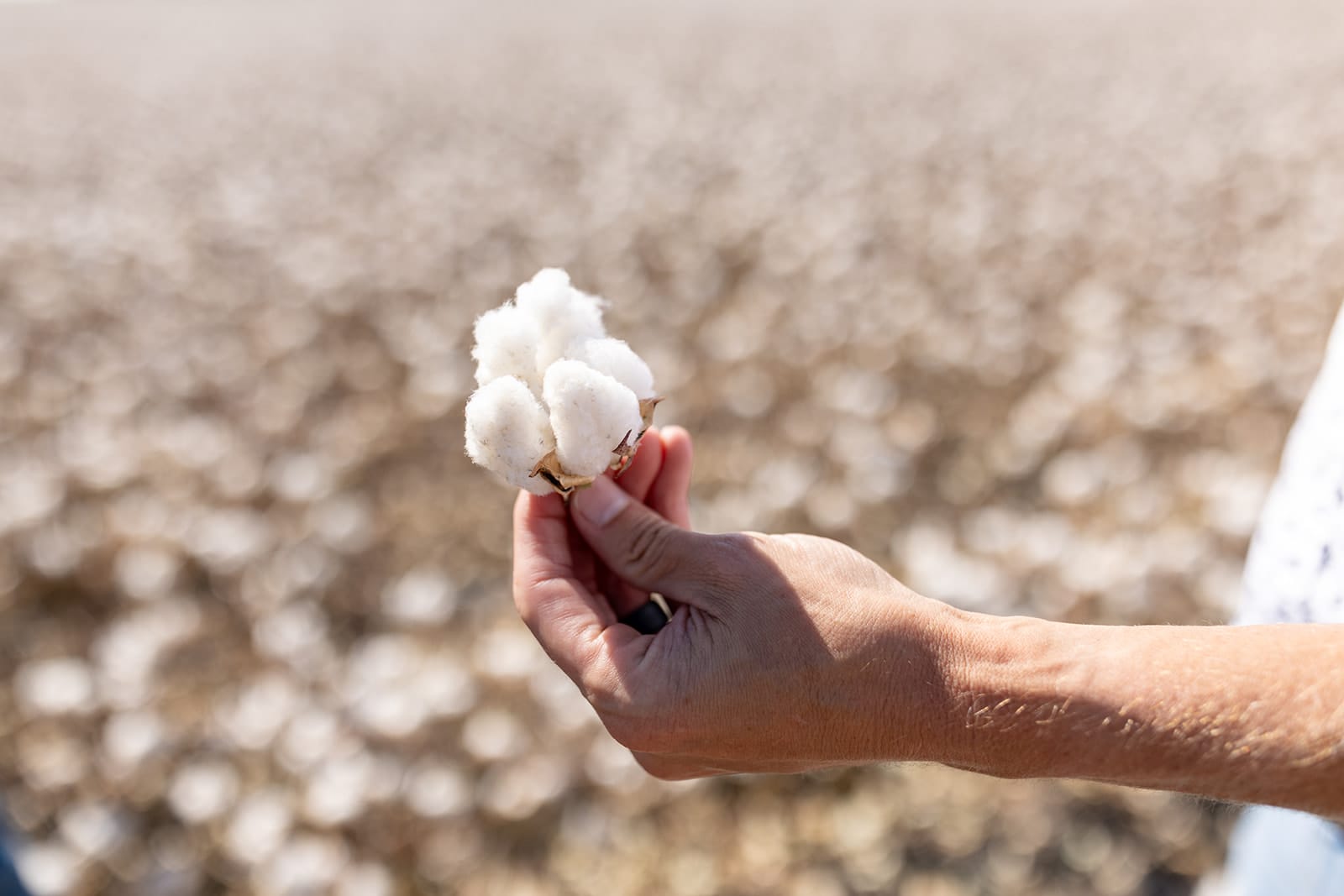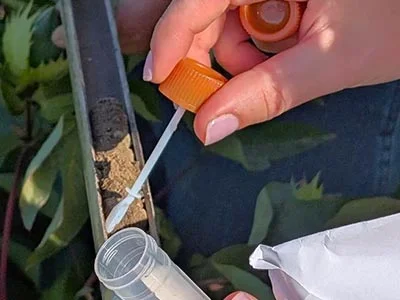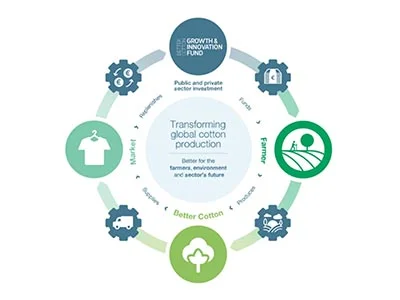

Soil is quite literally the foundation of farming. Without it, we could neither grow cotton nor support our growing global population. Soil is also a limited resource that is in urgent need of regeneration. The overuse of nitrogen-based mineral fertilisers used in conventional farming has taken its toll on soil health worldwide.
Soil underpins everything – its rich biodiversity and vital function in crop production and carbon storage make it fundamental to life on earth. However, a third of the world’s soils have deteriorated at the hands of erosion and contamination. Sustainable soil management is no longer enough – we need to look at regenerative approaches that will significantly improve soil health.

2030 Target
By 2030, we want 100% of Better Cotton Initiative (BCI) Farmers to have improved the health of their soil.
How Cotton Production Impacts Soil Health
Healthy soil is the starting point for farm productivity and sustainability. It is also often the most neglected and under-appreciated resource in farming. This leads to poor soil management, resulting in low yields, soil depletion, wind erosion, surface runoff, land degradation and climate change (both local and global).
As climate change causes disturbed rainfall patterns and worsening droughts in many cotton producing regions, healthy soil could well become the farmer’s main asset for climate resilience and climate mitigation. Improved soil management brings a variety of benefits to farmers, including:
- Better yields by improving the availability of nutrients and water to crops
- Reduction of pests and weeds
- Reduction in labour needs
- Reduction of erosion, soil compaction and soil degradation


Soil Health in the BCI Principles and Criteria
To help farmers better understand and care for their soil, the BCI Principles and Criteria requires farmers to develop a Soil Management Plan.
A Soil Management Plan has four parts:
To help farmers better understand and care for their soil, the BCI Principles and Criteria requires farmers to develop a Soil Management Plan.
- Identifying and analysing soil type
- Maintaining and enhancing soil structure
- Maintaining and enhancing soil fertility
- Continuously improving nutrient cycling
One of the main ways BCI Farmers maintain and enhance soil structure and fertility and improve soil nutrients is by tilling the soil less and using cover crops. Cover crops are plants grown during the off-season to improve soil quality, prevent soil erosion, limit weeds and control pests and diseases. They essentially protect and feed the land until the next cotton planting.
BCI Farmers also learn Integrated Pest Management techniques that reduce their reliance on chemical pesticides. Techniques include crop rotation, using biopesticides made with ingredients found in nature and encouraging bird and bat species that act as predators to cotton pests.
The Impact of BCI on Soil Health
In the 2018-19 cotton season, BCI Farmers used less pesticide than Comparison Farmers in five out of the six countries tracked — in Tajikistan, farmers used an impressive 38% less. Biopesticides and organic fertilisers were also used more frequently by BCI Farmers. In India, farmers used biopesticides 6% more, while in China, they used organic fertiliser 10% more than Comparison Farmers.
BCI sustainable farming methods in practice


Vinodbhai Patel became a BCI Farmer in 2016 after discovering that he could learn how to fertilise his soil and manage pests using non-chemical solutions. To nurture the soil, Vinodbhai began making a natural liquid fertiliser using locally available ingredients. He mixes cow urine and dung that he collects from nearby farms, jaggery (unrefined cane sugar) from the market, soil, hand-crushed chickpea flour and a little water.
By 2018, this mixture in combination with planting his cotton more densely, helped him reduce his pesticide costs by 80% (compared to the 2015-16 season) while increasing his overall production by over 100% and his profit by 200%.
“Just three years ago, the soil on my farm was so degraded. I could hardly find any earthworms in the soil. Now, I can see many more earthworms, which suggests my soil is recovering, and my soil tests show that nutrient levels have increased.”
Vinodbhai Patel


How BCI Contributes to the Sustainable Development Goals (SDGs)
The United Nation’s 17 Sustainable Development Goals (SDG) outline a global blueprint for achieving a sustainable future. SDG 15 states that we should ‘protect, restore and promote sustainable use of terrestrial ecosystems, sustainably manage forests, combat desertification and halt and reverse land degradation and biodiversity loss’.
With a comprehensive Soil Management Plan, BCI Farmers increase soil biodiversity and prevent land degradation — helping protect one of the earth’s most valuable resources for years to come.
Learn more
Image credit: all United Nations Sustainable Development Goal (UN SDG) icons and infographics were taken from the UN SDG website. The content of this website has not been approved by the United Nations and does not reflect the views of the United Nations or its officials or Member States.

